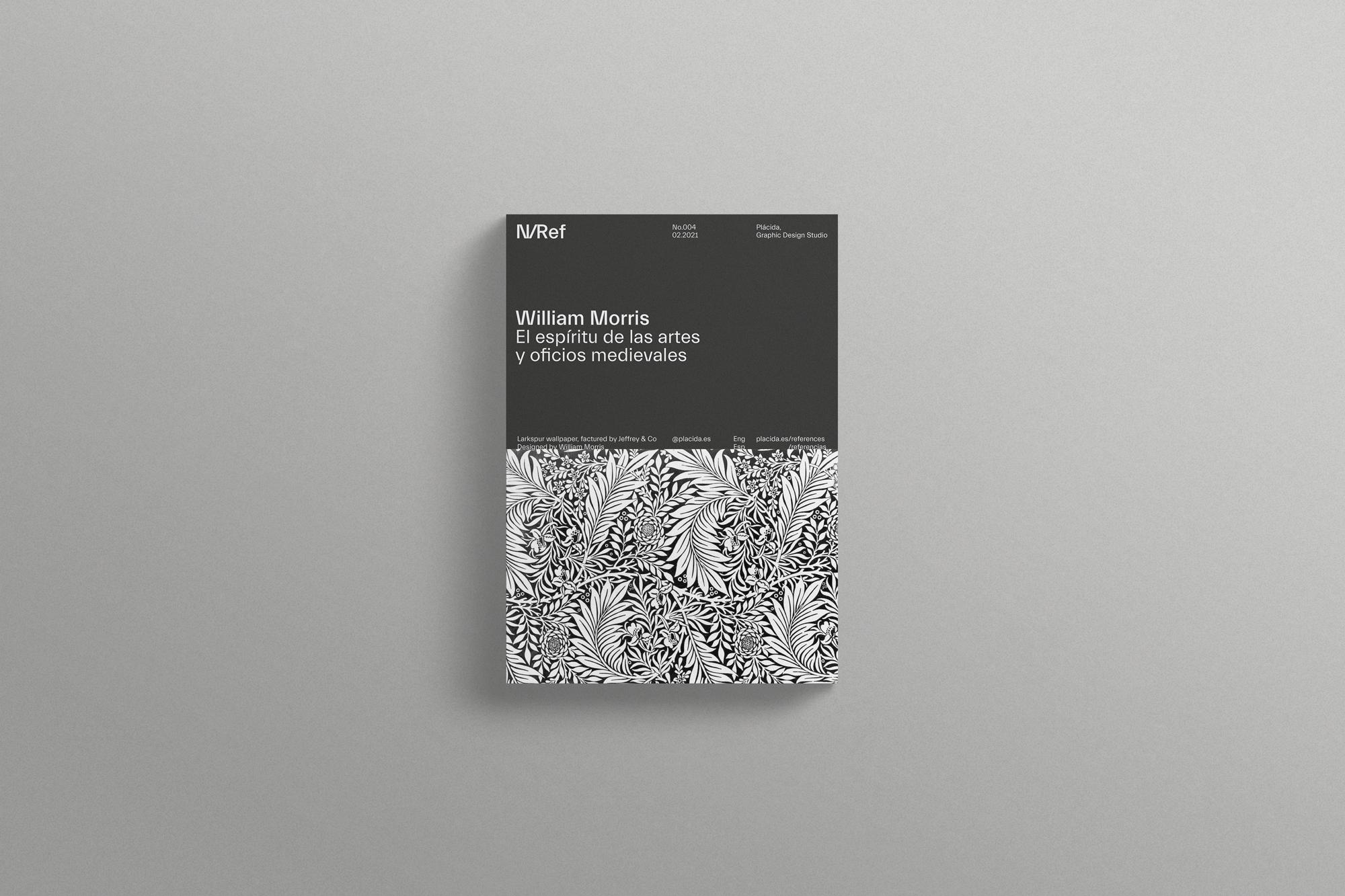In the second half of the 19th century, in the midst of the industrial revolution, the Arts & Crafts movement arose, linked to design and the decorative arts. Its leading ideologue was William Morris (1834-1896), a multi-tasking artist and designer. He was a craftsman, printer, poet, social reformer, writer, labourist and political activist who promoted Labourism in his country and dedicated his life to fighting for a return to pre-industrial ways of living and creating.
The industrial revolution was leading to an impoverishment of aesthetics. William Morris sought to bring design to everything; he attempted a renewal of culture by recapturing the spirit of medieval arts and crafts. His work had a great influence on the visual arts and industrial design of the 19th century. He brought about a genuine revolution in book design and printing with the creation of the Kelmscott Press, one of the first handcrafted publishing houses of the modern era.
His prolific work as a designer included tile, embroidery, tapestry, wallpaper, carpets and wood. He used natural dyes, championed the principle that “art is for everyone” and created exquisite patterns and subtly stylised natural forms.
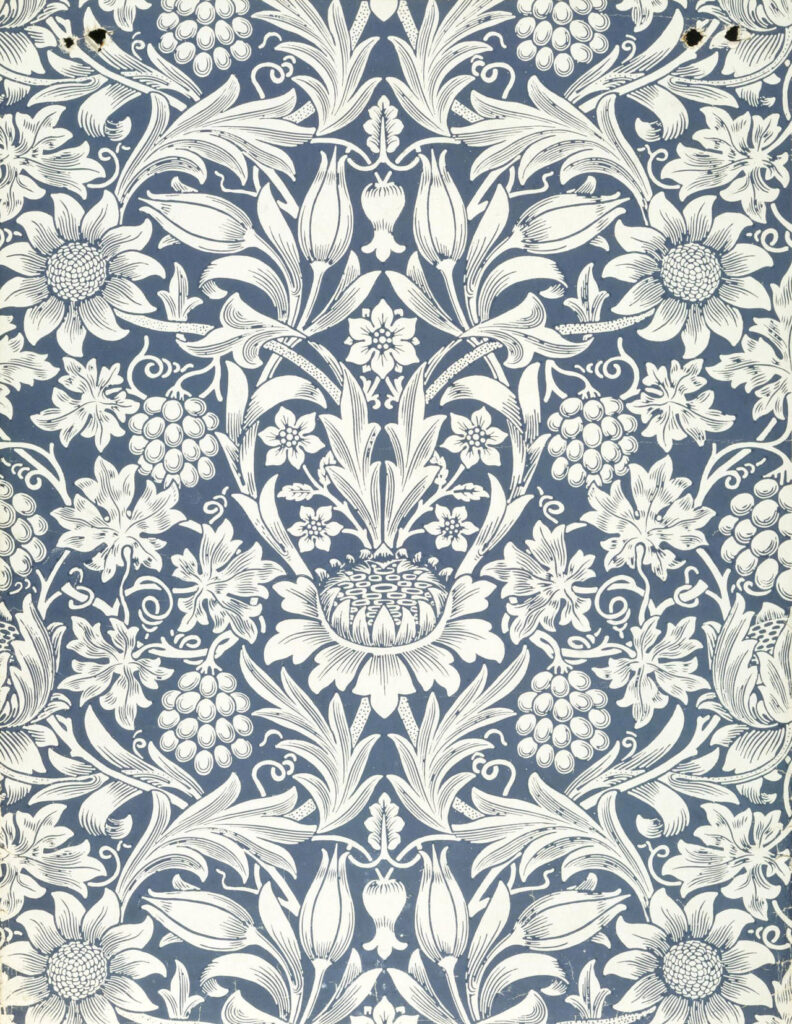
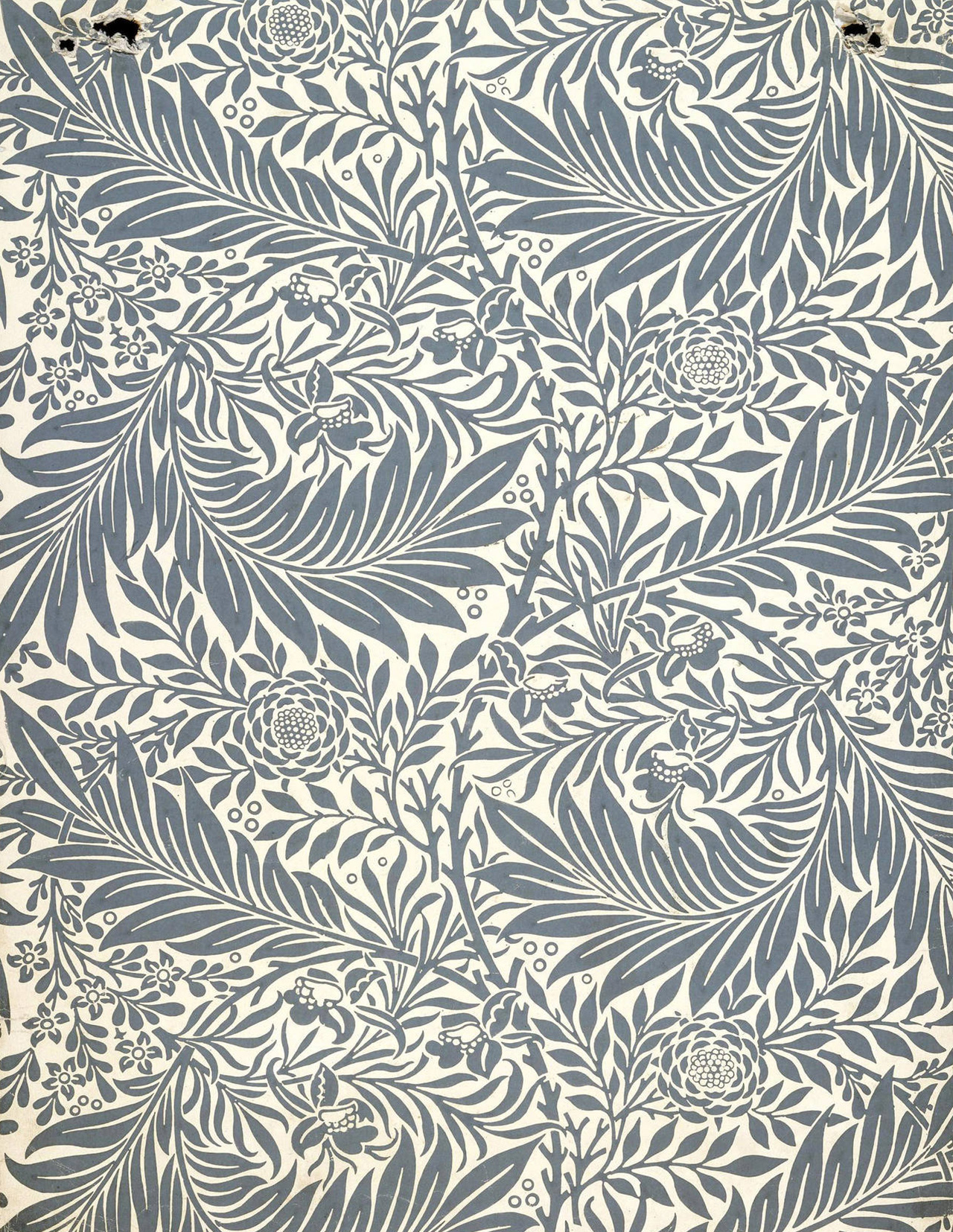
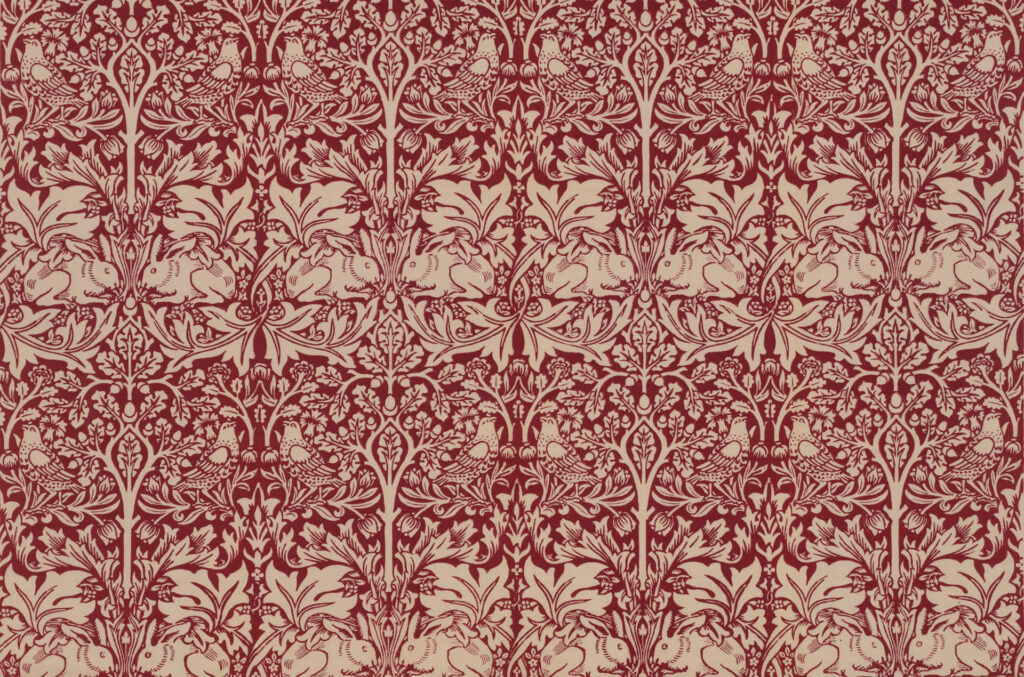
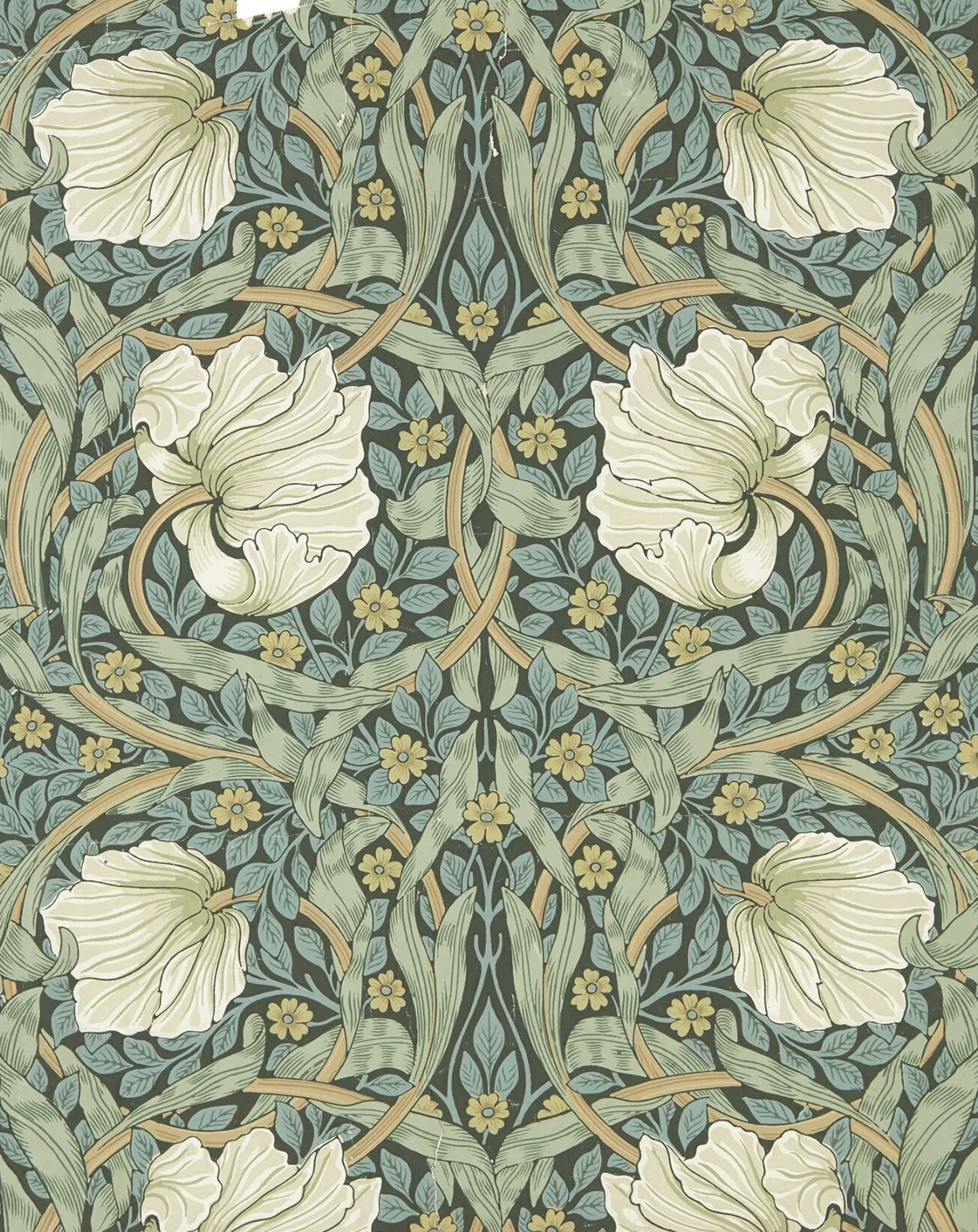
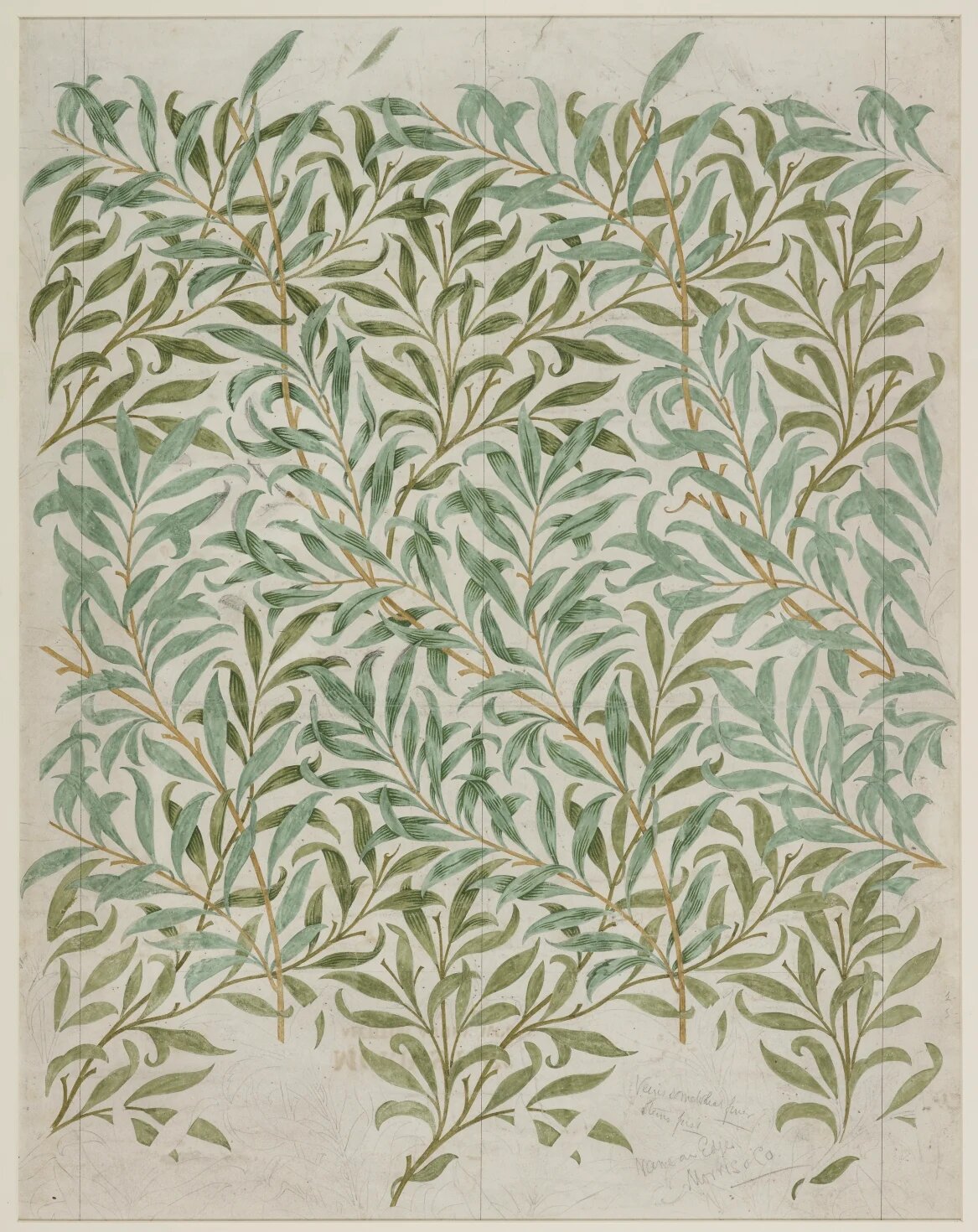
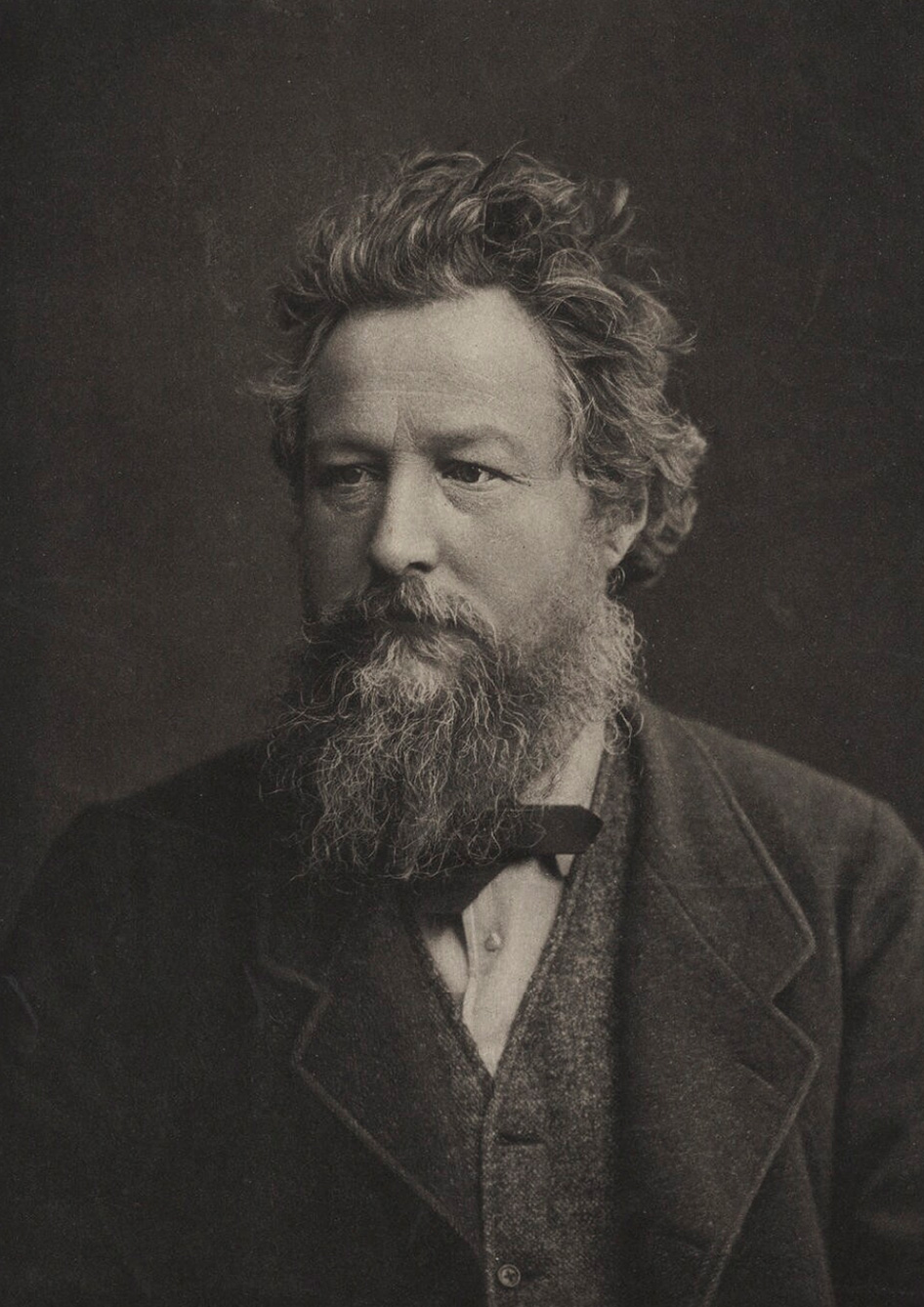
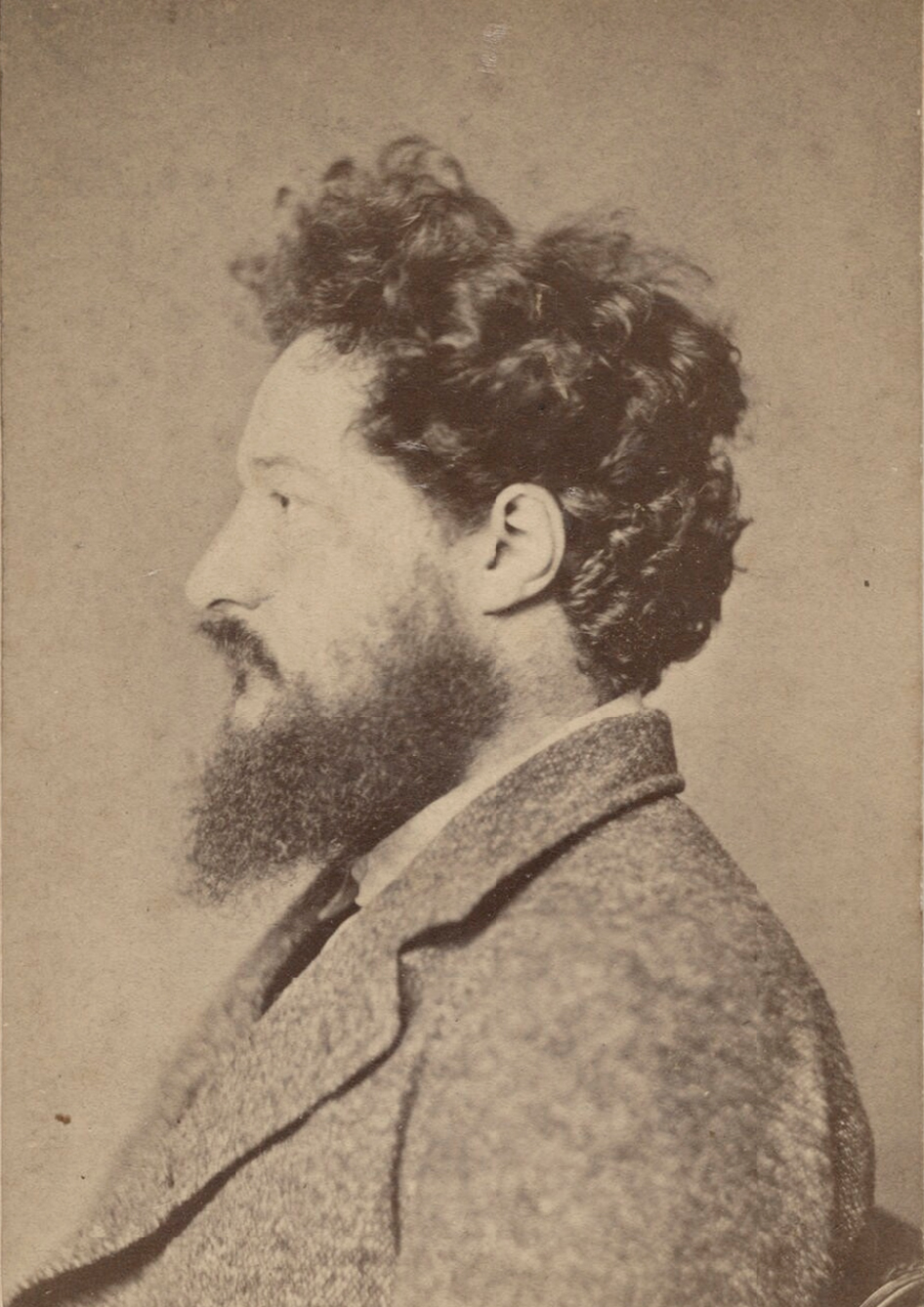
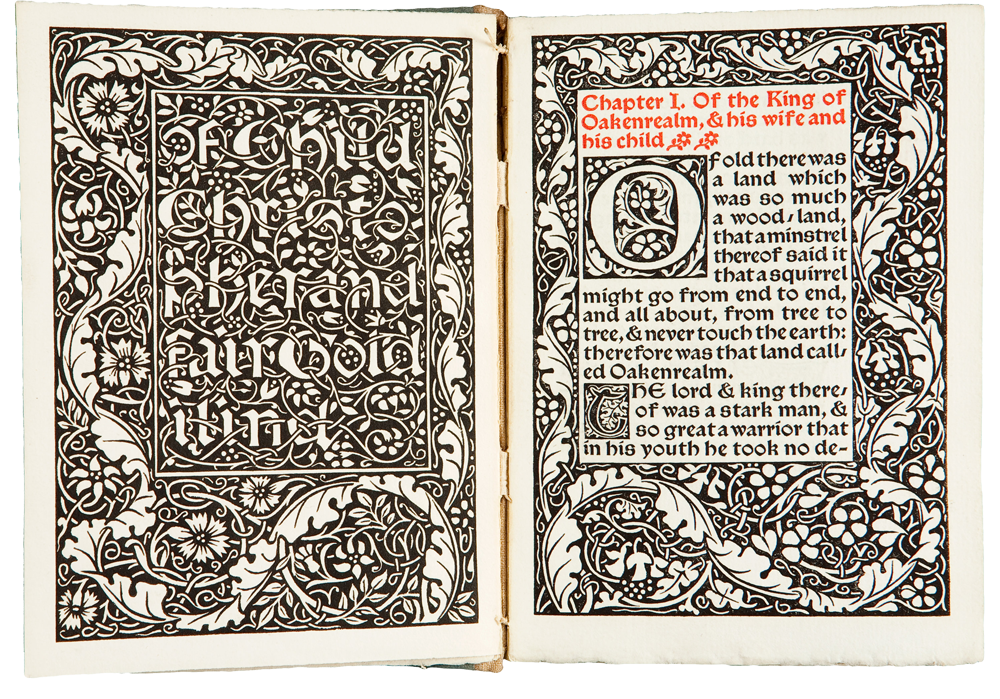
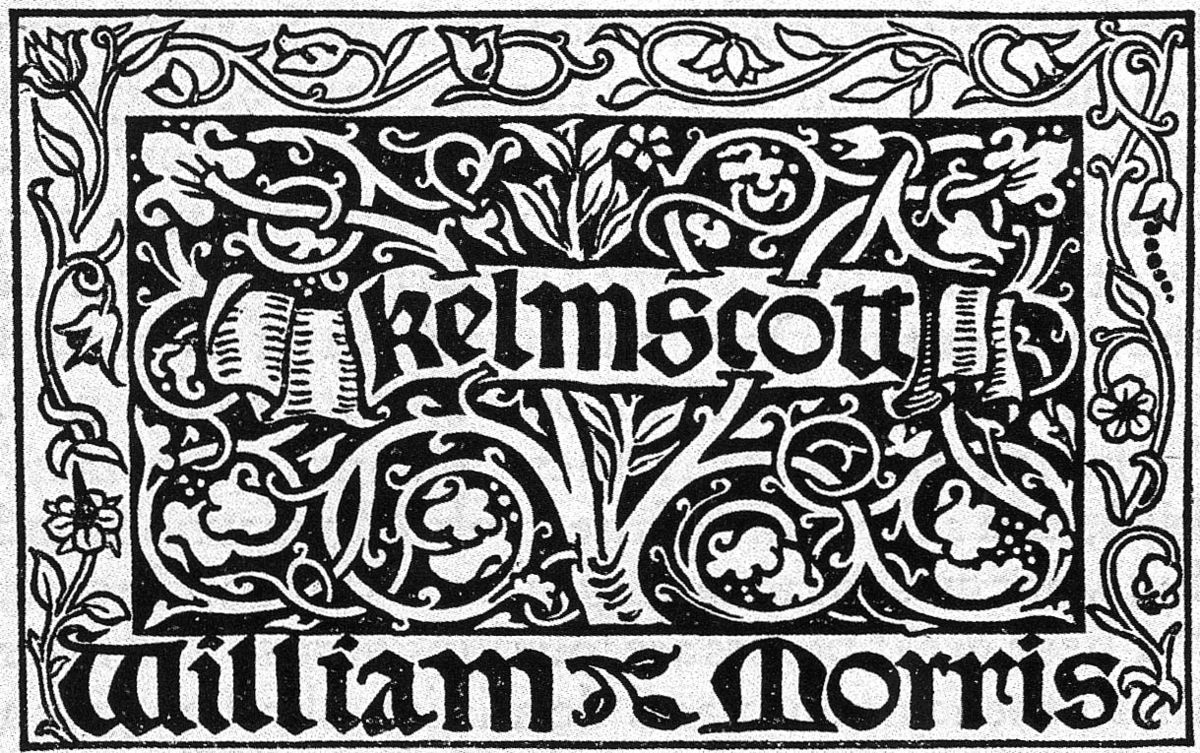
(1) Sunflower wallpaper, designed by William Morris, manufactured and printed by Jeffrey & Co., 1879, England. Museum no. E.513-1919. © Victoria and Albert Museum, London
(2) Larkspur wallpaper, designed by William Morris, manufactured by Jeffrey & Co., 1874, England. Museum no. E.468-1919. © Victoria and Albert Museum, London
(3) Rabbit Pattern Printed Fabric (no. 23583) c. 1938
(4) Papel pintado Pimpernel [Pimpinela], hacia 1876 © Morris & Co.
(5)William Morris, Dibujo para el papel pintado Willow Bough, (rama de sauce) 1887 © The Whitworth, The University of Manchester
(6) William Morris by Walker & Boutall, after Abel Lewis photogravure, circa 1896 (April 1880)
5 7/8 in. x 4 1/8 in. (149 mm x 105 mm) image size acquired, 1954
© National Portrait Gallery, London
(7) William Morris by John Robert Parsons, published by Ellis & Green
albumen carte-de-visite, 14 June 1870
© National Portrait Gallery, London
(8 and 9) The Kelmscott Press was a publishing house started between 1890 and 1891 by William Morris. It published works by him and the classics using his own designs for typography and letter ornamentation.
